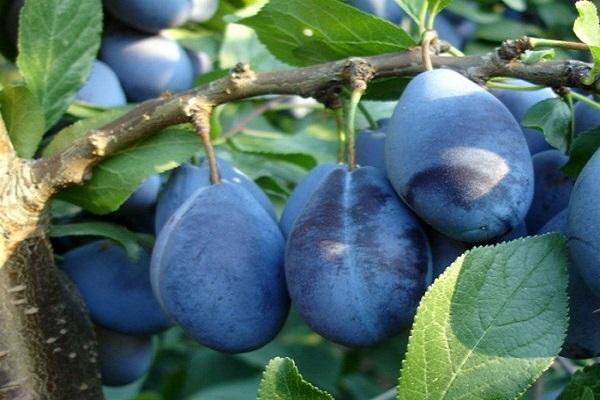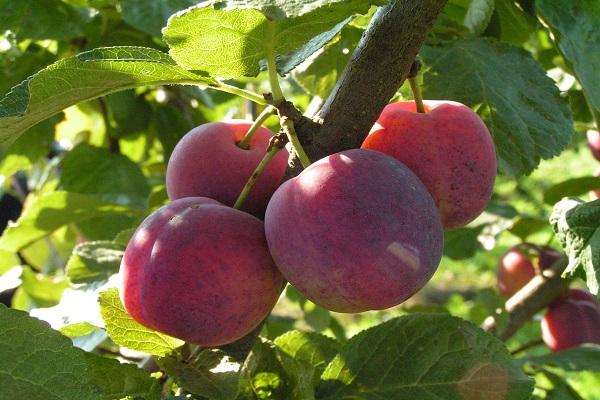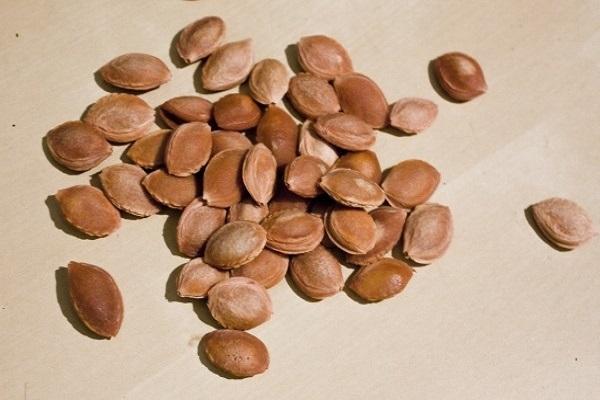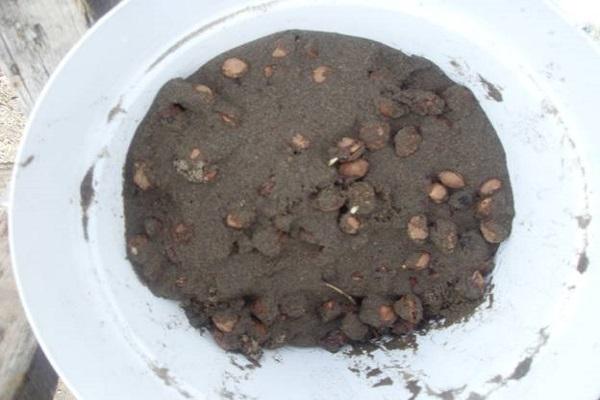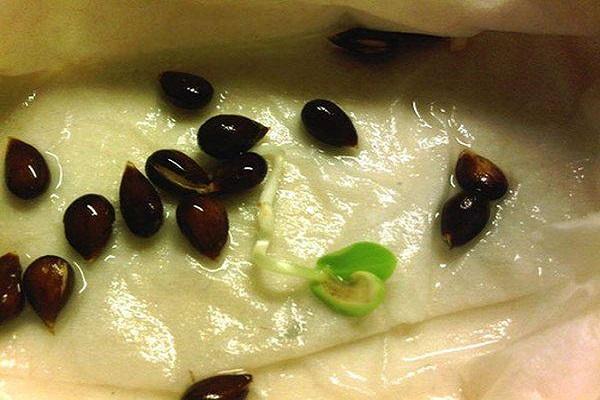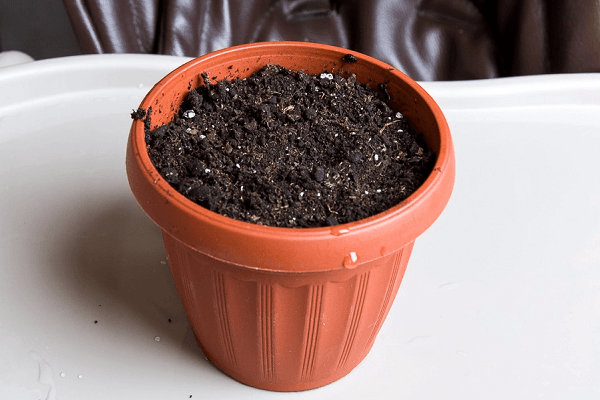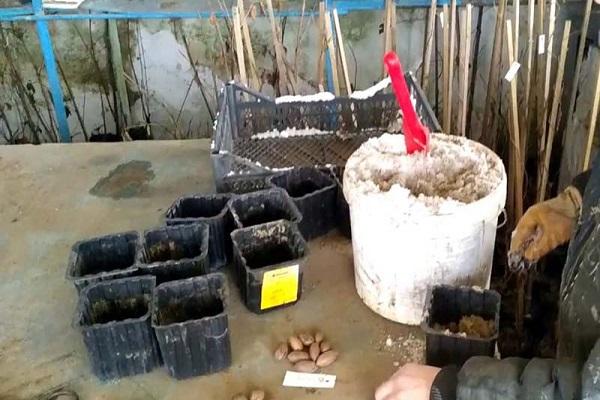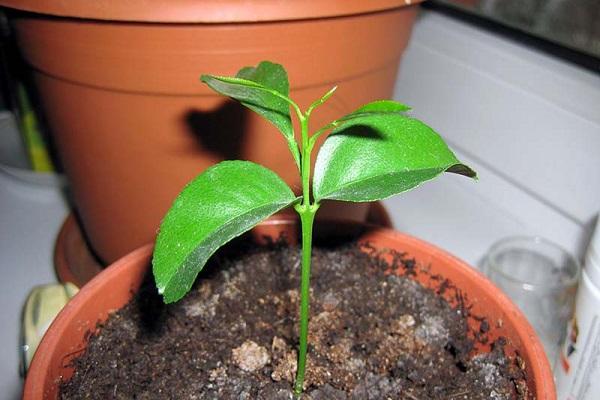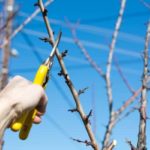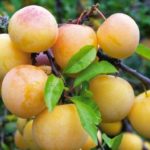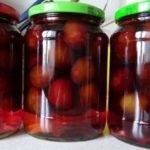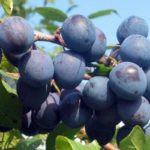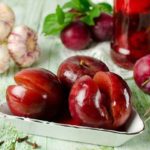Gardeners think about how to grow their favorite plum tree from a seed at a time when they are unable to obtain ready-made planting material of the desired variety. It happens that it is not even possible to recognize the name, but the eaten fruit left an unforgettable impression, and the person became eager to grow such a tree in his garden. There are many subtleties and nuances in this process that must be taken into account.
- Advantages and disadvantages of growing plums from seed
- Recommended varieties of plums
- Will a plum tree bear fruit from a seed?
- Selection of planting material
- Sprouting a seed
- Stratification
- Planting in a pot
- Pot sizes
- Required soil composition
- Drainage
- Procedure technology
- Conditions for germination
- Temperature
- Watering
- Top dressing
- When to expect sprouts to sprout
Advantages and disadvantages of growing plums from seed
The cultivation of plums from seeds is carried out mainly by breeders or summer residents, who set themselves the goal of obtaining a high-quality rootstock. The disadvantage of this method is that it is practically impossible to preserve the characteristics of the mother plant. Another disadvantage is that the seed does not germinate immediately. Sometimes this process lasts 1.5-2 years.
A tree grown from a seed shows the most unpredictable results. This may turn out to be either a new variety with improved characteristics, or an ordinary wild game, the fruits of which are almost unsuitable for consumption due to their sour taste and small size. Having ventured into the experience of growing a seedling from a seed, you always get excellent material for rootstock and cultivation of a plant with the desired characteristics.
Recommended varieties of plums
To grow a plum tree in the climatic conditions of the middle zone, preference should be given to the following varieties:
- Minsk yellow;
- Belarusian;
- Volga beauty;
- Vitebsk late.
In the climate of the warm south, cultivation is practiced:
- Kuban comet;
- Victoria;
- Kromani.
The first of these varieties is a hybrid of cherry plum.
Sharply continental weather conditions provide the opportunity to successfully cultivate:
- Chinese precocious;
- Ussuriyskaya;
- Morning;
- Egg blue;
- Eurasia;
- Canadian.
Will a plum tree bear fruit from a seed?
When growing a plum tree from a seed, it was possible to become familiar with the characteristics of the first harvest no earlier than 4.5-6 years after emergence.
Selection of planting material
To cultivate plums from pits, it is necessary to select planting material of varieties that are resistant to crossing.The fruit must be fully ripe at the time of harvest, because the seed of an unripe fruit contains an embryo that is not fully formed. You should not take only one seed for planting. To ensure a high chance of germinating a seedling, you need to take several seeds at once.
Sprouting a seed
The most important and crucial point is the correct germination of the seed.
Stratification
The main stage of plum seed germination is called stratification. Its essence is that the seed is kept in cool and moist conditions. The stratification process involves placing the collected seed in a nutrient soil mixture consisting of:
- perlite;
- sawdust;
- crushed moss;
- peat;
- coarse river sand.
Before being sent to such a nutrient mixture, the seed is soaked for 3 days in water. In this case, immersion is performed only half the length of the bone, which ensures access of oxygen to the embryo. Pre-soaking ensures the leaching of components that inhibit the development of the embryo.
Stratification is carried out within 2-3 months. In the first couple of weeks after planting the seed, the air temperature is maintained at +16-21 C. After this, the dishes with plum pits are sent to the bottom shelf of the refrigerator, where the air temperature is +1-+6 C. The planting material is stored there for about 65-80 days .
Just before sowing the plum seeds into the pot, the temperature in the place where they are kept is reduced to 0 C. The length of time they are kept in such conditions is 25-30 days. You can ideally recreate the desired temperature regime in the basement. In this case, it is necessary to monitor the moisture level of the nutrient substrate in which mold may appear.In this case, you should immediately treat with a solution of potassium permanganate.
Planting in a pot
You can plant the seed in a pot when it swells well and the skin bursts. If such changes have not occurred, then the likelihood of seedlings appearing from such planting material is minimal. To plant a plum seed in a pot, you need to choose the right composition of the nutrient substrate. A mixture of expanded clay is placed at the bottom to ensure good drainage. After this, a layer of coarse river sand is poured, and then the main layer of nutrient substrate is added.
The bottom of the pot must be perforated. This will help protect the plant from the development of fungal diseases, as well as avoid stagnation of water, leading to rotting of the root system.
Pot sizes
The pot for cultivating a plum tree from a seed must have a diameter of at least 19 cm. Otherwise, the plant will not be able to receive sufficient nutrients and develop normally, as a result of which it will die before planting in open ground.
Required soil composition
The main layer of soil for germinating plum pits in a pot is mixed from the following components in equal parts:
- vermiculite;
- leaf soil;
- any humus.
Drainage
Expanded clay is most often used as a drainage layer, which is laid on the bottom of the planting container, on top of which coarse river sand is poured.
Procedure technology
The prepared soil is first moistened, and then the bone is buried 5 cm into it. It should be placed as close to the center of the pot as possible. It is recommended to first hit the seed with a hammer so that it does not split into 2 parts, but cracks a little.Such actions help awaken the embryo inside.
If several seeds are planted in one container, they should not touch each other. After planting, the container is covered with cellophane and placed in a warm, well-lit place. After 1.5 months, a sprout should appear.
Conditions for germination
Sprouting a plum seed will be successful only if a number of necessary conditions are met.
Temperature
The air temperature in the room where the plum seed is germinated should be maintained at +20-25 C. An equally important indicator is humidity. When humidity is low, there is a need to take measures for additional humidification using a spray bottle or an air humidifier specially designed for such purposes.
Watering
The soil should be irrigated no more than twice a week. Watering should be plentiful. For these purposes, use water heated to room temperature and pre-settled.
Top dressing
After the emergence of seedlings, plums grown from seeds begin to be fed with nitrogen-containing fertilizers. Ammonium nitrate is suitable for fertilizer. However, it must be used with extreme caution, in accordance with the attached instructions. Otherwise, the root system gets burned and the plant dies.
When to expect sprouts to sprout
Plum seedlings sprouted from a seed hatch approximately 45 days after sowing in a pot. In order for the plant to bear fruit in the future, the seedling must be transferred into a new container of larger volume every 3 months. It can be sent to open ground only after a year.
If you don’t want to bother with pots and seedlings, you can plant a plum pit directly in the garden plot.For such purposes, add a small amount of any humus to slightly acidic soil, moisten the planting site and plant the existing seeds there to a depth of 10 cm. Prepare a hole for planting measuring 15 x 20 cm. Sprinkle the seed so that a small mound is formed on top. In order to protect the planting from rodents, poison should be spread around the hole.
In open ground, it is recommended to plant plum seeds in an elevated place on the north side. With this arrangement, the snow will linger longer, and the seedling will be protected. The area for planting is chosen to be well-lit and protected from drafts. It is better to give preference to places along the fence.
For better survival of the seedling, you need to sprinkle any organic fertilizer on the bottom of the hole, and also throw in a little calcium-rich eggshell. In the process of growing a young tree, it is important to constantly keep the soil moist, but not to allow excess water to stagnate. When planting seeds in open ground, seedlings may appear only after 1-2 years.

